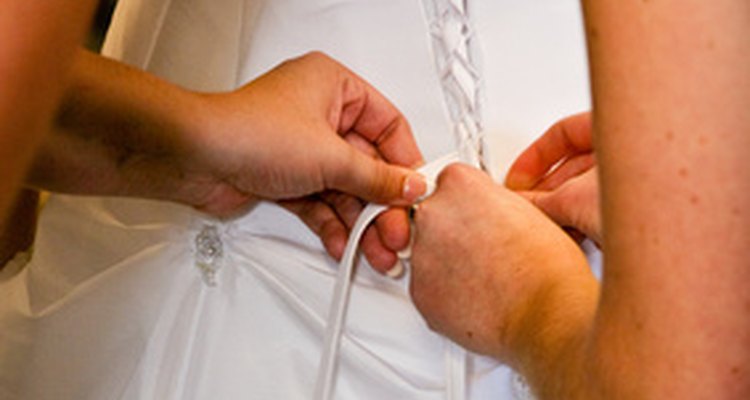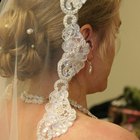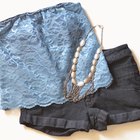
You don’t have to be a celeb to plan an out-of-this-world wedding—especially when it comes to fashion. Strapless mermaid dresses, sashes matching attendant’s gowns and sultry Art Deco retro fashion are all ways to turn heads as you walk the white carpet. If you plan a winter ceremony--or your idea of wedding finery more closely matches a Renaissance faire than a New York cathedral--there’s a hooded wedding cape in your future. Wow guests when you glide down the aisle looking every inch the princess you saw in your little girl dreams.
Shop for hooded cloak patterns. Check pattern books at local fabric and craft shops, as there are myriad versions of the hooded cloak, robe and cape and you want the right one. Design your own pattern if you know your way around a sketchpad and scissors. If you create your own pattern, make a mock-up of your hooded wedding gown cape before cutting into the actual fabric you plan to use. This extra measure assures a finished product that matches your vision.
Clean your work surface. This step is important, even if you’re not constructing an all-white hooded cape to wear atop your wedding gown. Pin pattern pieces to approximately 4 yards of 60-inch wide fabric. Use pinking shears to cut sections of the cape and the hood so selvages won’t unravel. Pin together the front and back sections of the body of your hooded cape and stitch them to create the shell of the garment.
Employ this useful tip when stitching the back seam of your hooded bridal cloak: fold the seams together along the line that forms the center back and over-stitch the seam as you would a man's shirt. This ensures the cape lies flat and hangs nicely.
Construct the hooded portion of your wedding cape. Attach the outer hood to the fabric you chose for the lining and then invert and press the unit before attaching the hood to the body of the cloak. Cut and add facings to the body of the garment, pressing out seams as you go.
Hang the unfinished cape from the ceiling or a tall fixture for 24 to 48 hours--a trick employed by cape makers for centuries. You’re using lots of heavy material for your project and it’s going to stretch. Allow the weave to relax and stretch, then hem the cloak for a seamstress-perfect finish.
Trim your hooded cape so it coordinates with your wedding gown. Don’t add so many extras you risk overloading your wedding outfit. A single band of fur around the bonnet of the cape, or a glittery clasp is usually sufficient to give your entire wedding outfit an elegant finish.
Related Articles

How to Make a Bridal Cape for a Wedding ...

How to Make a Fabric Poncho

How to Make a Child's Graduation Gown

How to Make a Chapel Veil

How to Make a Child's Veil

Steaming a Chiffon Wedding Dress
How to Make a Baby Tutu

How to Measure and Cut a Wedding Veil

How to Sew a Nightgown

How to Make a Children's Folklorico ...

How to Make a Wedding Shawl

How to Make a Puffy Tulle Dress

How to Make a Baby Crib Canopy Out of a ...

How to Make a Scalloped Lace Crop Top

How to Dress Like Jacqueline Kennedy

How to Narrow Wide Pants

How to Crochet a Wedding Veil

How to Alter the Length of a Leather ...

How to Cut Up a Shirt for the Gym

How to Fix a Low Neckline on a Wedding ...
References
Writer Bio
Based in Chicago, Gail Cohen has been a professional writer for more than 30 years. She has authored and co-authored 14 books and penned hundreds of articles in consumer and trade publications, including the Illinois-based "Daily Herald" newspaper. Her newest book, "The Christmas Quilt," was published in December 2011.
Photo Credits
wedding gown preparation image by Paul Retherford from Fotolia.com